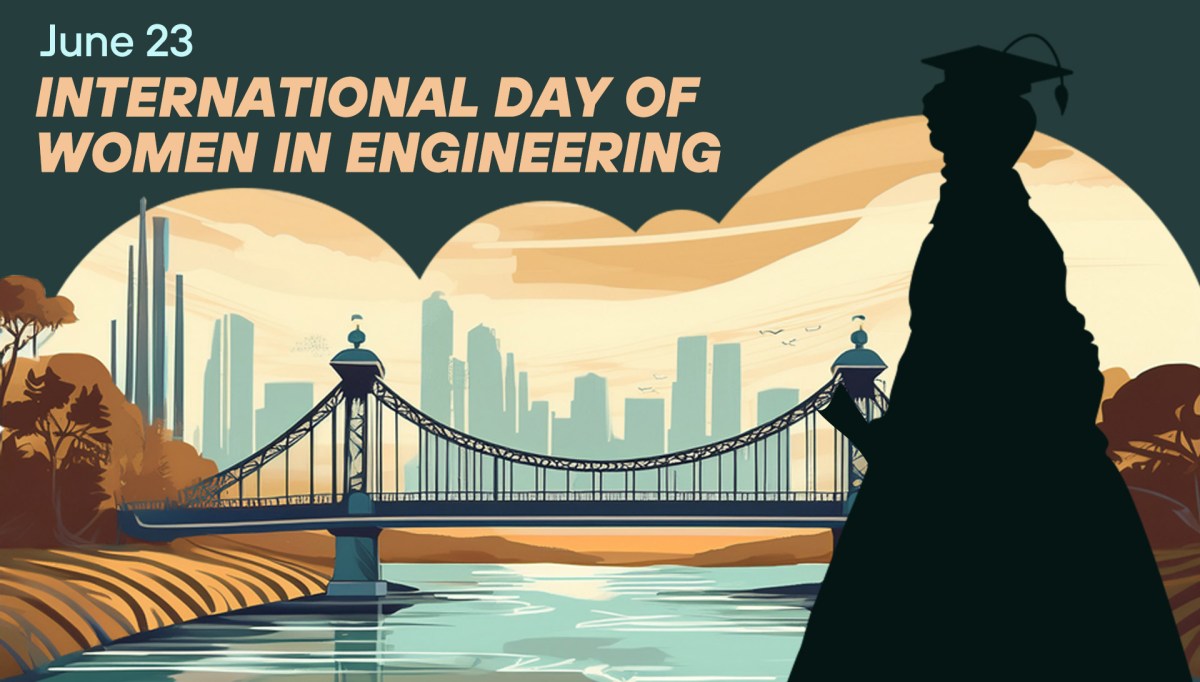2014: origin of International Women in Engineering Day.
Although we may be more familiar with the International Day of Women and Girls in Science, which has been commemorated since 2015 implemented by UNESCO and UN Women, the International Day of Women in Engineering also has a place on the calendar: specifically, June 23.
Sponsored by the Women’s Engineering Society (WES) of the United Kingdom since 2014, this day seeks to raise awareness of the work and achievements of women engineers, making their work visible and highlighting existing professional opportunities.
It also aims to encourage girls to consider engineering careers in their educational horizon in order to develop their professional performance in this sector.
As stated on the day’s website, “INWED gives visibility to female engineers around the world at a time when they are still very underrepresented” since “in the UK only 16.5% of engineers are women”. In 2017 the day received the official patronage of UNESCO.
As a curiosity, the WES was born at the end of the First World War as a response to the fact that many women wanted to pursue engineering careers, a field they had entered during the course of the war in the face of vacancies created by men who were mobilized.
Women in engineering
Throughout history, there have been many women who have left their mark in the field of engineering. Let’s take a look at some of these women who have set an example in a field in which male profiles are still in the majority.
We have talked about Hedy Lamarr, whose birthday has even given date to the celebration on November 9 of the Inventor’s Day, in other occasions in this blog, so let’s meet other relevant female engineers who over the decades have acquired the status of female referents in this field.
Pilar Careaga
To contextualize the historical moment in which the milestone we are going to talk about took place, we can explain that until 1933 women were not allowed to vote in Spain.
A few years earlier, four years earlier, in 1929, Pilar Careaga (1908-1993) became the first female engineer in Spain, when she graduated as an industrial engineer from the Special School of Industrial Engineers in Madrid.
This Madrid-born woman of Biscayan descent also made history by being the first woman to drive a railroad in Spain and also became the first female mayor of Bilbao during the last years of Franco’s dictatorship, specifically between 1969 and 1975.
Thus, Pilar Careaga has gone down in history as one of the leading women in the world of engineering in Spain.
Elisa Leonida Zamfirescu
It was before that, for the first time in history, a woman achieved the title of engineer.
Although there is no consensus on the matter, some reports speak of the Romanian Elisa Leonida Zamfirescu (1887-1973) as one of the first women in the world to obtain an engineering degree. Specifically, in 1912 she became the first woman engineer in the history of Romania and also the first in Germany.
It should be explained that his application to the Faculty of Bridges and Roads in Bucharest was rejected, so he had to graduate from the Royal Academy of Technology in Berlin (now the Technical University of the German capital).
Despite this, he returned to his home country to practice, starting his professional career at the Geological Institute of Romania, which was newly established at the time.
Alice Perry
Irishwoman Alice Perry (1885-1969) “rivals” Zamfirescu in who was the first European woman with a degree in engineering, something she achieved in 1906 at what was then known as Queens College in her hometown of Galway, so she would have obtained it six years before the Romanian.
After professional experiences linked to his academic training in his native Galway and later in London and Glasgow, he would end up moving in the 1920s to the United States, specifically to Boston, where he turned his professional career towards literature.
In addition to being a writer and editor of poetry, she also became an active part of the Christian Science movement.
Emily Warren Roebling
Although she was self-taught, so she does not compute in the categories of female engineers with degrees, Emily Warren Roebling (1843-1903) has gone down in history, although fame came to her in an unsought way.
His father-in-law, John Augustus Roebling, was in charge of the construction of the Brooklyn Bridge, but he died suddenly, so the job fell to his son Washington. However, the latter also contracted an illness – decompression sickness – that made him bedridden.
As a result, she had to assume the role of liaison between her husband – chief engineer on the site – and the administrations or other engineers, which led her to become a self-taught engineer and play an important role in the completion of this iconic New York infrastructure.
Edith Clarke
Edith Clarke (1883-1959) is also a female reference in the world of engineering since she was the first woman to obtain a degree in this field in the United States, specifically in electrical engineering, at the prestigious MIT, in 1919.
She also went down in history as the first female professor of engineering at the university (in 1947, at the University of Texas) and, in addition, she is the inventor of the Clarke Calculator.
This device was created in 1921 as a graphic device that facilitated and accelerated complex calculations necessary for electrical engineering, especially in long-distance power transmission.
A device that was revolutionary because of its speed (ten times faster than the traditional manual methods used until then) and reliability (since it had a margin of error of 1%).







